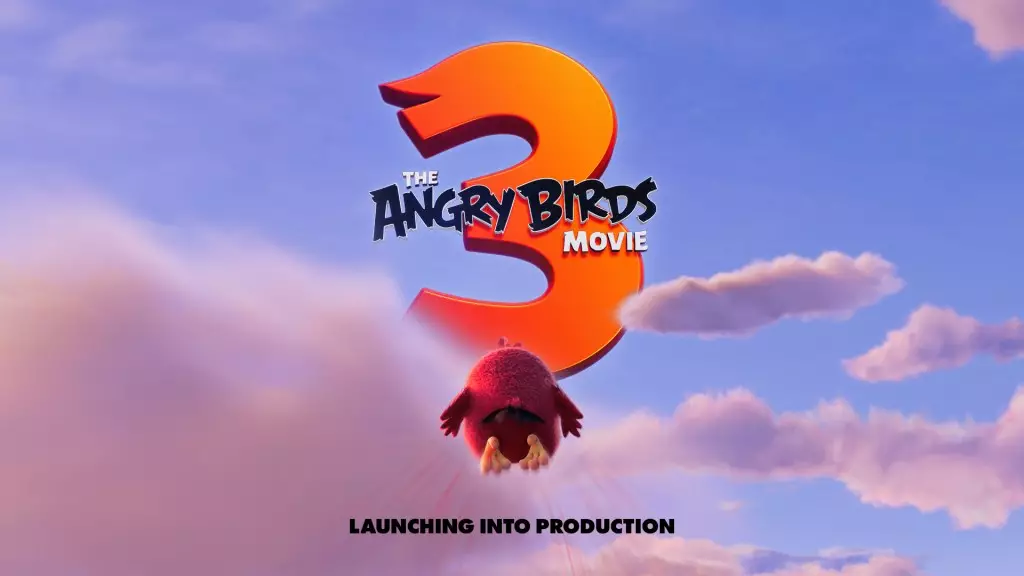In an era where cinematic creativity often finds itself shackled by over-dependence on brand nostalgia, the announcement of “The Angry Birds Movie 3” seems to be the latest example of Hollywood’s reluctance to innovate. Set for theatrical release on January 29, 2027, the film will continue the profitable but creatively limited journey of this franchise, replete with its established voice cast. From Jason Sudeikis to Danny McBride, the roster remains loyal to its predecessors. However, as one peels back the layers of this upcoming release, one cannot help but question if this continued reliance on a formulaic approach serves audiences or merely the wallets of entertainment behemoths.
In the past two installments, the “Angry Birds” franchise managed to rake in a combined half a billion dollars at the global box office. Such figures traditionally spell success, yet they also signify a worrying trend of prioritizing profits over artistry. The collaboration of heavyweight studios such as Paramount Pictures, Rovio, and SEGA suggests that this third installment is more of an orchestrated marketing strategy rather than a genuine attempt at storytelling. Let’s examine what this means for the future of family-oriented films in a rapidly evolving entertainment landscape.
The Voice of a Generation or Just a Familiar Echo?
Perhaps the most striking element of this announcement is the commitment to familiar voices. The idea that audiences will again hear Sudeikis reprising his role as Red alongside returning talents like Josh Gad and Rachel Bloom is not without merit, but it stirs a question of authenticity. Seasoned voice actors can bring distinct flavors to their roles, yet how many times can we listen to the same voices before the novelty wears thin?
Furthermore, the introduction of new talents such as Emma Myers and Keke Palmer presents an intriguing twist, but one must wonder whether this ensemble can genuinely forge connections with younger audiences who increasingly gravitate toward innovative and refreshing narratives. With a voice cast so large, one cannot help but worry about the potential for the story to become overshadowed by the attempts to showcase comedic talent—resulting in a cluttered narrative devoid of depth.
A Marketing Machine or a Creative Powerhouse?
John Cohen, the producer of the film, touts the project’s potential to be “incredibly exciting.” But excitement in Hollywood often feels crafted more by spreadsheets than by an artistic vision. While the synergy between Paramount Pictures and the production team may promise an engaging experience, the true measure of success should not rest solely on financial returns. It should also extend to cultural significance.
Statements from executives, such as Alex Pelletier-Normand of Rovio, laud the brand’s “remarkable versatility.” Yet, such claims ring hollow when the franchise is essentially cycling through well-trodden ground. “Angry Birds” may have once been a groundbreaking mobile gaming experience, but its transition to the big screen demands an artistry that seems disturbingly absent from the context of this announcement.
The Bumpy Road Ahead for Family Cinema
As the landscape of family-oriented cinema continues to evolve, the competition grows fiercer. Streaming services like Netflix and Disney+ are rapidly reshaping expectations around what it means to produce family content. The success of new animated projects such as “Mitchells vs. the Machines” illustrates that audiences value innovative storytelling just as much, if not more, than brand familiarity.
In this light, “The Angry Birds Movie 3” is at risk of becoming an anachronism, a token nod to a past era when recognizable content could effortlessly draw in families for a fun weekend outing. How long will audiences continue to indulge in predictable plots filled with familiar characters, which ultimately stymie true creativity? This release is poised precariously between nostalgia and innovation, a delicate balance that many past animated features have successfully navigated.
Through this lens, while fanfare may surround the release of “The Angry Birds Movie 3,” one must remain wary of the implications of our entertainment choices. Will this film inspire the next generation to think critically about the narrative, or will it simply reinforce a cycle of expecting the same formulaic constructs that have come to define animated films in recent years? The answer remains to be seen in a world that craves both humor and substance.

Leave a Reply